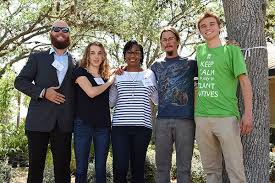Spring is here and wildflowers are popping up all over the country from the deserts of California to the North American Plains. Even in Florida the colorful blooms of spring wildflowers are already on display, buzzing with insects and alive with the sound of birds. After all, Florida boasts of many varieties of colorful blossoms in differing sizes, color and shape. In fact, Florida got its name from the Spanish explorer Juan Ponce de Leon, who on sighting land named it La Florida, which means “land of flowers.”
The Value Of Wildflowers
You may be wondering, what exactly is a wildflower. According to the Florida Wildflower Foundation, wildflowers are “any flowering herbaceous species, or woody species with ornamental flowers, which grew wild within the state’s natural ecosystems.” The sunshine state has agreeable growing conditions with nutrient rich soil, high pH and as the temperature begins to warm, wildflowers start to grow around the state.
Besides the aesthetic value of wildflowers, they have huge economic value in supporting pollination and a huge diversity of species from migratory birds to insects.
Plants and wildflowers provide us with food and medicine both directly and indirectly. Almost 80% of all medicinal drugs originate from wild plants. They are also the actual source of animal products and dairy products we consume because they are food for the animals.
Plants and wildflowers improve the air quality and water quality of watersheds, streams, and lakes by regulating flow of water and filtering sediments from water. The root systems of the plant cover hold the soil in place and protect it from torrential rain, heavy wind or water damage.
Ecologists have been following conditions from snow melt to precipitation and their effect on wildflowers. The response to different environmental triggers can be very different based on species and location, which gives us valuable insight on how the climate has changed over the years and its impact on the whole community.
Do enjoy the beauty of a field of wildflowers, but also think of its importance in sustaining a healthy ecosystem!
Wildflower Appreciation
The United States and Canada have over 15,000 different recognized species of native plants, with many new species being found every year. The areas considered rich in wildflower species are California (Antelope Valley California Poppy Reserve, Anza-Borrego ), Colorado (Gunnison National Forest), Washington (Mount Rainier National Park ), Florida , Hawaii, and the Southwest.
To truly appreciate wildflowers, you have to explore the public lands. All natural areas have wildflowers that are easy to spot. You can get guidance from local botanical gardens and nurseries or follow educational material and trail guides to enjoy the native wildflowers. There are a number of guided walks, displays, and presentations also on offer from federal agencies (Forest Service, Fish and Wildlife Service, and the National Park Service) and private organizations in order to help you appreciate the wonders of wildflowers right under your nose! But follow some etiquette on the hike and never pick the wildflowers.
Where To Find Spring Wildflowers In Florida Locations
Wildflower blooms are dependent on a complex interaction of genetics and different environmental factors, such as day length, temperature, moisture and soil characteristics, so their peaks are difficult to predict. It is advisable to check expected bloom dates before planning a trail trip.
Native wildflower blooms, such as Leavenworth’s tickseed (Coreopsis leavenworthii) and Black-eyed Susan are found in naturally moist areas, especially in April and May. And the bright yellow flowers of Southeastern sneezeweed will soon be seen along roadsides and natural areas. Florida’s Turnpike south of Orlando is a prime location to spot Leafless beaked orchid (Sacoila lanceolata) and Duck potato (Sagittaria spp.)
The interstate highways in Florida have over 1,000 miles of wildflowers that you can enjoy. There are over 200 miles of crimson wild flowers along I-10 between Tallahassee and Jacksonville, and 215 miles of purple showy flowers of the annual phlox along I-75 from Tampa north to the Georgia state line. You are also likely to spot the ground flowers of Florida Violet, which are abundant in open woods and clearings everywhere.
Towards the coast, you will find an abundance of showy native Blanketflower and Beach sunflower (Helianthus debilis) that flourish in dry, sandy conditions.
North Florida
Try the hiking trails in the Bear Lake Recreation Area or the Wire Grass Trail of the Blackwater State Forest, for the best wild flower viewing.
Do check out the Panhandle, hike along the forest of Florida Caverns State Park near Marianna.
In the southwestern section of the Apalachicola National Forest, you can see the wildflowers that share the same savannahs as the carnivores.
In Osceola National Forest the trails leading from the Olustee Battlefield and the Mt. Carrie wayside park have better wild flower habitat for blazing stars, goldenrod, aster, milkweed, and orchids.
San Felasco Hammock Preserve State Park near Gainesville has a great variety of wildflowers that go beyond spring and into the fall here.
Central Florida
The Longleaf Pine Reserve in Volusia County, Seminole State Forest west of Sanford and The Tosohatchee Wildlife Management Area near Orlando are great locations for spotting Florida wildflowers.
South Florida
Audubon’s Corkscrew Swamp Sanctuary is a great site for looking up wildflowers, as it the Everglades National Park.

